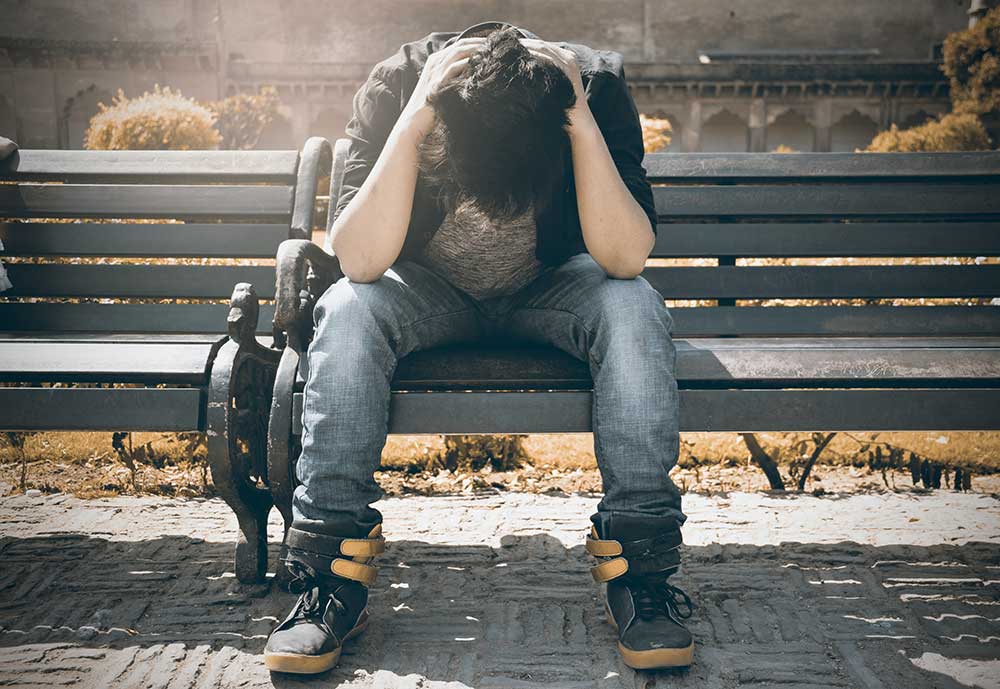Suicide Causes and Risks
Causes: There is no single cause of suicide. In most cases suicide is the result of a combination of different risk factors (e.g., mental illness, substance abuse, painful losses, family stressors, access to means of self-harm) in conjunction with one or more precipitating life events. These “triggers,” such as a break-up or being bullied are rarely the only “cause” of suicide, but rather the “last straw” that pushes an already at-risk individual over the edge. An important statistic shows that 90% of people across all ages who die by suicide have a diagnosable mental disorder at the time of their death. This is why identifying and treating mental illnesses is crucial in working to prevent suicide.
Risk Factors: Suicide is a complex behavior that is usually caused by a combination of risk factors in the presence of negative life events. The first step in preventing suicide is to identify and understand the risk factors. A risk factor is anything that increases the likelihood that a person will harm himself or herself. However, having these risk factors does not always mean that suicide will occur. –Adapted from the National Youth Violence Prevention Resource Center
Most Significant Risk Factors: Depression, Substance Abuse, Previous Suicide Attempt
Other Important Risk Factors: History of mental disorders (Post Traumatic Stress Disorder, Anxiety, Depression)
- Self-injury
- History of alcohol and substance abuse
- Family history of suicide and/or child abuse
- Loss (death of a loved one, divorce, etc.)
- Physical illness
- Easy access to firearms
- Being Lesbian, Gay, Bisexual, Transgendered or Questioning
- Bullying/isolation

WARNING SIGNS
What are the Warning Signs?
Did you know that suicide is the second leading cause of death for 15-19 year-olds in the United States and the third leading cause of death for 10-14 year-olds? A far greater number of youths attempt suicide each year. These are shocking statistics, but we also know that most youths who die by suicide suffer from a mental or substance use disorder, or both. It is important to look for signs of substance abuse or depression and get professional help for your child.
–CDC and Prevention

Warning Signs Demanding Immediate Attention:
- Talking about or writing about suicide or death
- Giving direct verbal ques, such as, “I wish I were dead” and “I’m going to end it all”
- Isolating from family and friends
- Giving away prized possessions
- Expressing the belief that life is meaningless
- Exhibiting a sudden or unexplained improvement in mood after being depressed and withdrawn
- Neglecting hygiene
- Dropping out of school or social, athletic, and/or community activities
Additional Warning Signs:
- Frequent tearfulness and/or crying
- Decreased interest in activities or inability to enjoy previously favorite activities
- Hopelessness, helplessness
- Persistent boredom or low energy
- Social isolation
- Increase or decrease in sleeping patterns
- Increase or decrease in eating patterns
- Low self-esteem/guilt
- Difficulty with relationships
- Increased irritability, anger or hostility
- Drug and alcohol use
- Obsessive risk-taking
- Marked personality change
- Absences in school and/or drop in school performance
It’s important to know what to do:
- Be willing to listen.
- Take it seriously. All suicide threats and attempts must be taken seriously or go to the nearest emergency room. Click here for HOTLINES.
- Do not keep the information a secret. You do not have to be certain that someone is suicidal before you talk with another person, preferably a trained adult such as a counselor, social worker, teacher, school nurse, family physician.
- Seek professional help. Encourage the person to see a physician or mental health professional immediately.
80% of all suicides give some warning of their intentions to a friend or family member. If your friend is depressed or exhibiting any of the warning signs, it is OK to ask her if she is considering suicide. In fact, that’s a true friend.
For more information relevant to you, visit the parent, teen or school page
Myths and Facts About Depression and Suicide
MYTH: It’s normal for teenagers to be moody; teens don’t suffer from “real” depression.
FACT: Depression can affect people at any age or of any race, ethnicity, or economic group.
MYTH: Teens who claim to be depressed are weak and just need to pull themselves together. There’s nothing anyone else can do to help.
FACT: Depression is not a weakness, it is a serious health disorder. Both young people and adults who are depressed need professional treatment. For many people, a combination of psychotherapy and medication is beneficial.
MYTH: People who talk about suicide won’t really do it.
FACT: Almost everyone who dies by suicide has given some clue or warning. Do not ignore suicide threats. Statements like “You’ll be sorry when I’m dead,” or “I can’t see any way out”-no matter how casually or jokingly said may indicate serious suicidal feelings.
MYTH: If a person is determined to kill themselves, nothing is going to stop them.
FACT: Even the most severely depressed person has mixed feelings about death, wavering until the very last moment between wanting to live and wanting to die. Most suicidal people do not want death; they want the pain to stop.
MYTH: People who complete suicide are people who were unwilling to seek help.
FACT: Studies of completed suicides have shown that more than half had sought medical help within six months before their deaths.
MYTH: Talking about suicide may give someone the idea.
FACT: You don’t give a suicidal person morbid ideas by talking about suicide. The opposite is true. Bringing up the subject of suicide and discussing it openly is one of the most helpful things you can do.






